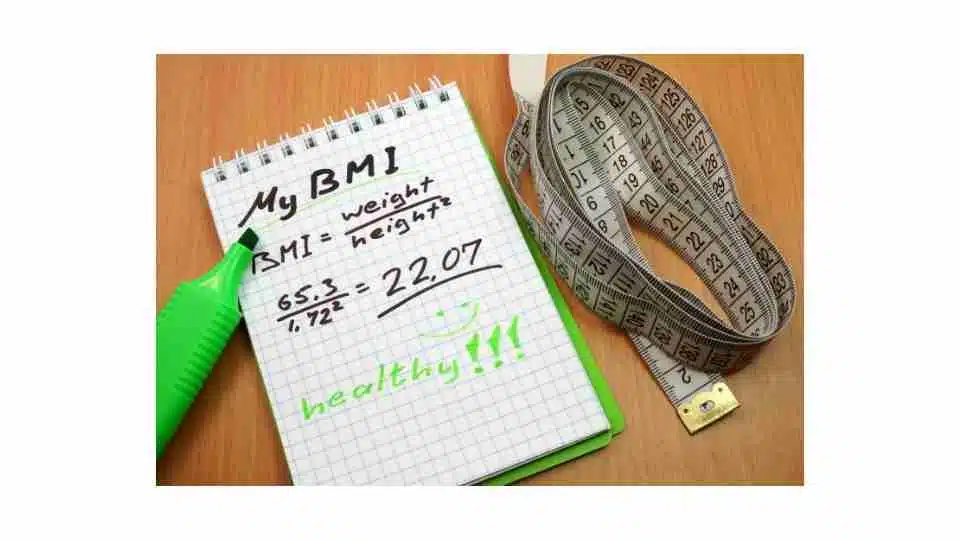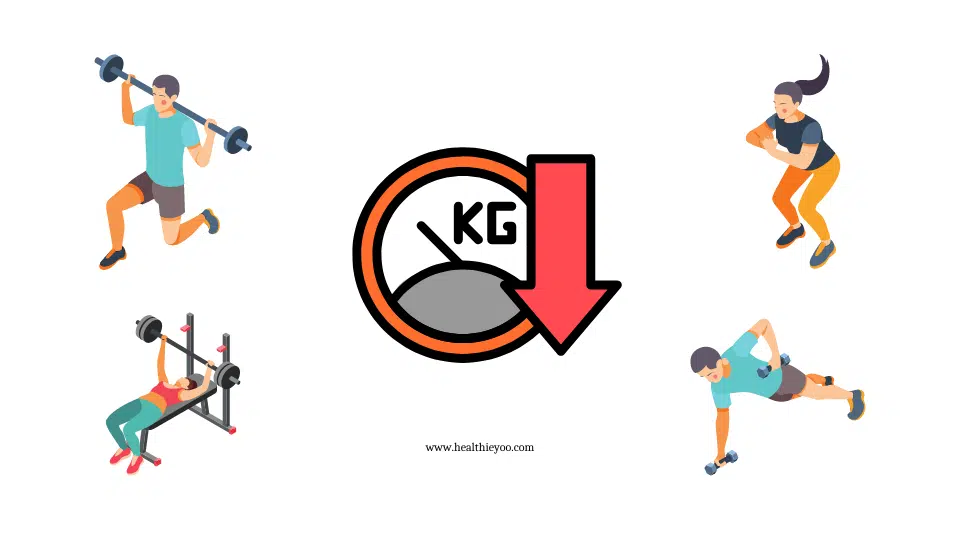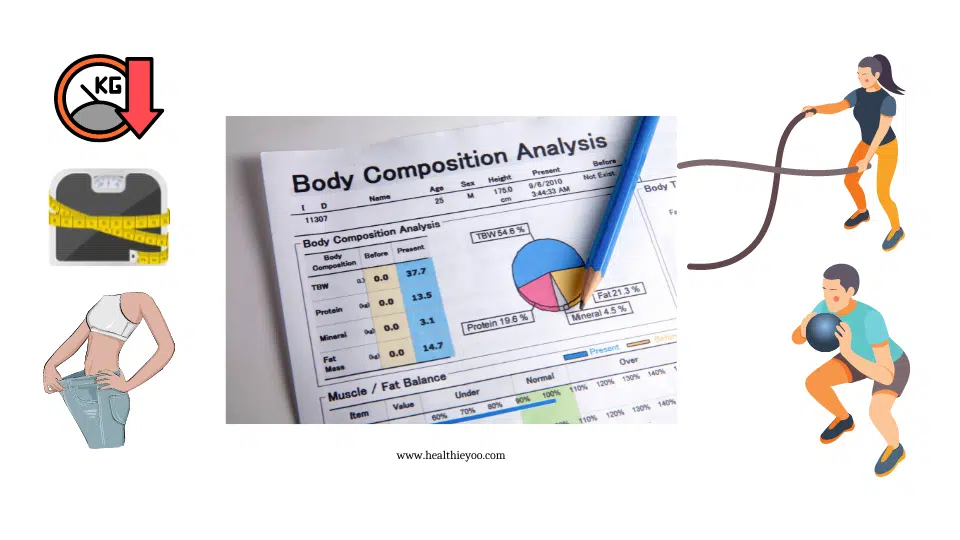What is body composition? What is BMI, the body mass index? How is BMI different from body composition? How do we achieve weight loss along with an ideal body composition for health? Here are some recommended body composition exercises to help you achieve your ideal weight and body composition which is a better predictor of the risk of diseases.
Weight loss and Your Body Composition
For years, we have read that nutrition choices, exercise, sleep, etc. play a major role in maintaining a healthy weight for every individual. The theory behind weight loss is to be in a calorie deficit (aka hypocaloric). This means an individual should consume fewer calories and move more (For example, walking, resistance training, intervals, etc.). But are there other approaches we can use that can systematically keep the weight off for our health and wellbeing? The strategies that I am about to discuss will help everyone achieve their ideal body composition and health goals through nutrition combined with body composition exercises.
What is Body mass index or BMI?
Body mass index or BMI is calculated using a person’s weight and height to provide an estimate of body fat. One can calculate BMI as Body weight (kg)/ Height (m2) (2). The National Institute of Health (NIH) uses BMI to define a person as overweight, or obese instead of traditional height vs weight charts. According to NIH classification, individuals may be classified as underweight, normal, overweight, and obese according to their BMI as under (2):
Classification of Individuals by NIH on the basis of BMI (2) | BMI Value |
Severely Underweight | BMI < 16.5 kg/m2 |
Underweight | BMI < 18.5 kg/m2 |
Normal weight | BMI > 18.5 – 24.9 kg/m2 |
Overweight | BMI > 25 – 29.9 kg/m2 |
Obese/ Obesity | BMI > 30 kg/m2 |
· Obesity Class I | BMI 30 – 34.9 kg/m2 |
· Obesity Class II | BMI 35 – 39.9 kg/m2 |
· Obesity Class III (Severe/Extreme) | BMI ≥ 40 kg/m2 |
For Asian & South Asian Population | |
Overweight | BMI 23 – 24.9 kg/m2 |
Obesity | BMI > 25 kg/m2 |

What is Body Composition?
Body composition measurements are used by health professionals to determine the percentage of fat, bone, muscle, and water in our bodies. Body composition is associated with several diseases, such as cardiovascular disease, obesity, diabetes, cancers, osteoporosis, osteoarthritis, etc. and its measurements are important for evaluating the effects of nutritional interventions (1). A lower % of body fat and a higher % of lean tissue represents a healthier body composition.
Body Composition vs Body Mass Index (BMI)
We have seen above what the body mass index is. However, body composition measurements are better as compared to body mass index measurements as body composition provides a better evaluation of your weight by measuring the fat %, lean mass, and fat mass which is not possible using BMI. Body composition may therefore better predict risks of diseases as compared to BMI. This is also the reason why two persons of the same body weight might look differently because of differences in their body composition.
Ideal Body Composition – Fat %
As per the American Council on Exercise, the acceptable fat % for women is 25-31% and for men is 18-24%. A woman is considered to be obese if the fat % is above 32% and a man is considered obese if the fat % is above 25% (3).

Factors Affecting Body’s Need for Energy
The body’s need for energy is dependent on five stages:
Basal Metabolic Rate (BMR):
Level of energy required to sustain the body’s vital function in a walking state.
In essence, the BMR represents the number of calories required to sustain life without movement or digestive activity. Thus, a person’s BMR can only be established after a twelve-hour fast in a controlled environment chamber, after lying motionless for an extended period.
The measures of BMR are made by determining how much oxygen a person consumes per minute and this can be done in a laboratory setting using what is called a metabolic cart. The more muscular you are, the more calories you need daily to maintain that muscle. For example, a 200lb man may have a BMR of 1900-2100 calories whereas a 150lb woman may have a BMR of around 1400-1600 calories (4).
Resting Metabolic Rate:
Level of energy required to sustain the body’s vital functions at rest (4).
Thermic Effect of Feeding (TEF):
Metabolic response to the digestion of food and the uptake of nutrients in the blood. (4).
Exercise Activity:
Physical movement is performed in structured sessions. (4).
Non-Exercise Activity Thermogenesis (NEAT):
Spontaneous Physical Activity such as jumping and moving hands. (4).
Energy Imbalance State for Weight Loss
Sometimes in order to lose weight, one should be in a state of Energy Imbalance: when the amount of energy intake doesn’t meet or exceeds the amount of energy output.
In some cases, energy imbalance is required, for example, if someone wants to lose fat, they need an imbalance: their energy expenditure should be greater than their intake (4).
The Importance of Right Nutrition and What If You Reach A Plateau
The USDA recommends that everyone consume 15-20% of protein, 50-55% of carbohydrates, and 25-30% of fat. Not everyone responds well to this ratio based on the person’s activity level, genetics, etc. (4).
It is important for the individual who wants to lose weight to consume a protein intake a little higher than 20% to satisfy their appetite throughout the day.
It is important to realize that in some instances, some individuals are going to reach a plateau when it comes to losing weight. We also must realize that the program that the fitness professional may give, in the beginning, may not help the client lose weight. It is important to alter their exercise routine and calorie/carbohydrate intake throughout the year (4).
Role of Body Composition Exercises & Resistance Training in Weight Loss
Now that we talked about the importance of nutrition and how our body responds to different forms of nutrient intake for everyone, we can now talk about a resistance training schedule to systematically keep the excess weight off and improve our body composition.
Generally, aerobic exercises involving large muscle groups such as cycling, swimming, jogging, or running are recommended for weight loss, whereas resistance exercises have not been given much attention due to less evidence of their effect on weight loss or reducing BMI. Resistance exercise sometimes may result in increased body weight still improving body composition. From a health perspective, it is important to distinguish between lean and fat mass and visceral fat % (5). In a recent meta-analysis of 116 studies, researchers reported that resistance exercises alone and when combined with calorie restriction significantly reduced fat% and whole-body fat mass and improved lean mass hence it was suggested that resistance-based exercise programs rather than aerobic exercises must be incorporated into a fat loss for obesity (5).
Here is the body composition exercise schedule that one can follow to not only achieve the ideal weight but also improve body composition for a healthy life.
Body Composition Exercises Schedule
The important thing we need to address in any program is that we must conduct a movement screen analysis in order to see where the individual lies in their muscle imbalances. Next, we proceed on with this progression:
Body Composition Exercises – Squats
Short Stop Squat
This exercise was popularized by Dr. Stuart McGill and the movement is as follows:
- Hands on your thighs
- Drop and retract your shoulder blades (pull your shoulders back)
- As you hinge from your hips slide your hands towards your knees. (6)
Goblet Squat
This exercise was popularized by Dan John please utilize a dumbbell or kettlebell and perform the squat. Please grab the dumbbell or kettlebell and place this object towards your sternum and you can make the exercise more challenging by bringing either object away from you while performing this position. This will allow you to utilize your core stabilizers to help keep your spine in an optimal neutral pattern.
Barbell Back Squat
Please place the barbell on the middle of your back and hinge from your hips and squat down (hold this position for two seconds before rising). As you get stronger, please add weighted plates to perform this exercise.
Single Leg Suitcase Squat
Please either utilize kettlebells or dumbbells on each hand as if you were carrying a suitcase and please perform this exercise from the floor in a split stance before progressing onto the bench. You want to place one leg behind the bench and please stand on the other leg while performing this exercise. You want to squat down while holding these objects and please gradually rise up. That is one rep.

Body Composition Exercises – Deadlift Progression, Lunges, Push-ups, Pull-ups
Chair of Death
Please utilize either a broomstick or dowel and stand in front of a bench. You want to make sure that a dowel or broomstick is touching your tailbone, your spine, and the middle of your head. As you squat down you want to hinge from your hips (push your glutes backward), please make sure that you do not lose contact with either the broomstick or dowel. This exercise will teach you optimal hip hinge patterns which is critical for the squat or deadlift. (7).
- Perform deadlift with kettlebell or dumbbell with a yoga block
- Perform deadlift with kettlebell or dumbbell without a yoga block
- Perform deadlift with a trap bar
- Perform single leg Romanian Deadlift (RDL) with a kettlebell or dumbbell
Forward/Backward Lunges
Please start off with bodyweight before proceeding to dumbbells or kettlebells. Stand tall and please tuck your pelvis (contract your glutes) and lunge forward and then lunge backward, that is one rep. Please complete two sets of 10 reps.
Stabilization Push-ups
(3/2/1, i.e., 3 eccentric/ 2 isometric/ 1 concentric) on a dyna disc: 2*10 reps then progress on to 2*20 reps
Dumbbell Bench Press
2*10 reps
Dumbbell Rows
Please utilize dumbbells with a fair amount of resistance and please hinge forward from your hips (as you for performing the Chair of Death exercise). Please utilize a neutral grip (aka turn the dumbbells so that the palms are facing each other). Without moving your torso, row the dumbbell upward until it hits your lower chest and that is one rep. Please complete 2* 12 reps.
Assisted Negative Pullups
Please either utilize an assisted pull-up/ dip machine or wrap a resistance band on a pull-up bar. Please pull your body up in a controlled manner, please utilize a five-second count as you lower yourself. Doing this movement will help reinforce the strength of the latissimus dorsi and your upper and middle trapezius as well.
Face Pulls
Please attach a rope or wrap a resistance band around the cable machine. Please stand back a couple of inches while externally pulling the rope/band and please tuck your pelvis while doing this. You want to squeeze your shoulder blades while you externally rotate your shoulders (using the rope or resistance band). That is one rep, please complete two sets of 15 reps and progress onto two sets of 25 reps.
Body Composition Exercises – Circuit to complete
Hollow Body Crunches
20 reps
Bird Dog
Progressing onto Bird Dog Squares, and then onto reverse sixty-second plank
3/2/1 Body Weight Squat
20 reps
Forever Push-ups
20 reps/10 seconds rest/ 15 push-ups/ 5 seconds rest/ 5 push-ups
Squat Jumps
10 reps
Clamshell
Progressing onto side plank with hip abduction: 20 reps
Farmer Walks
Please utilize challenging resistance such as dumbbells or kettlebells and squeeze your shoulder blades and tuck your pelvis. Please complete 20-to-40-meter walks while carrying this external load.
Take a 90-second recovery and please complete steps 1-6 again. Please move from one station to another and please utilize good form while performing these drills.
Please warm up thoroughly while completing the power phase of the program:
Snatches
(either utilizing a barbell, kettlebell, or medicine ball): 2* 5 reps
Cleans
(either utilizing a barbell, kettlebell, or medicine ball): 2* 5 reps
Split Squat Jumps
2*5 reps
Single Leg Hops
2*30 seconds on each leg
Hurdle Hops
2 sets of 20-meter hops
Please sprint for 20 to 30 meters and complete two to three reps of this distance while taking a 60 to 90-second recovery in between these runs.
Conclusion
In conclusion, by following body composition exercises involving resistance training coupled with healthy nutrition and sleep, one can systematically lose weight over a given period and take control of their health and well-being at the same time. Also please subscribe to www.healthieyoo.com for more fitness, nutrition, and weight loss-related advice.
References
- https://www.ncbi.nlm.nih.gov/pmc/articles/PMC5992366/
- https://www.ncbi.nlm.nih.gov/books/NBK541070/#article-35288.s1
- https://www.acefitness.org/resources/everyone/tools-calculators/percent-body-fat-calculator/
- Andrews, Ryan and Berardi, The Essentials of Sport and Exercise Nutrition, 2015
- https://www.ncbi.nlm.nih.gov/pmc/articles/PMC9285060/
- Parisi, Bill The Anatomy of Speed 2021.
- Dicharry, Jay Anatomy for Runners 2012.

Venkat Reddy

Healthieyoo
Qualified Professionals from the in-house team of Healthieyoo
Related Posts

Keto BHB Pills – The Magic Of Beta Hydroxybutyrate
We all have heard about ketogenic diets or the commonly used term keto diets for weight loss. The state of ketosis produces ketone bodies that

5:2 Fasting, Dry Fasting vs Wet Fasting – To Fast Or Not To Fast
Why fast? What are the benefits of fasting? What are the types of fasting – Dry fasting vs wet fasting, long-term fasting, intermittent fasting, and

Cottage cheese, Dark chocolate, White kidney beans – Know Top 10 Healthy Foods for Weight Loss
Are you trying to lose weight but unable to follow a strict regime of exercise and diet? Rigorous diet restrictions or rigorous exercise schedules can

Ectomorph Mesomorph Endomorph Diet And Exercise – Find Your Body Type To Lose Fat & Build Muscle
What is a body type? Losing unwanted fat and building muscle is all about knowing your body and how to navigate your physical characteristics accordingly.

How To Lose Weight Without Counting Calories?
We’ve all heard it before: we have to move more and eat less to lose weight. But how to lose weight without counting calories? The

MCT Oil For Weight Loss and Belly fat loss
While there is no effective remedy for quick weight loss except for rigorous dietary restrictions that can take a toll on your health, here is

